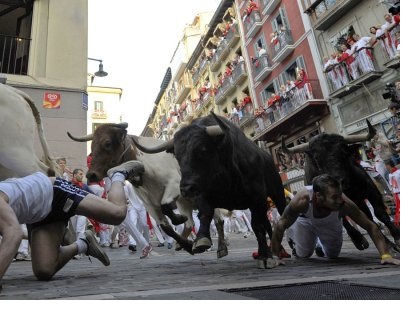Once market participants realize the top is in and the only possible result from here on is a loss, the herd will turn and follow the leaders who are selling.
A funny thing happens when the stock market herd turns--all the usual central bank tricks no longer push the markets higher.
Though the mainstream financial media reports on central bank policy as if the policies move the markets, the actual mechanism is not policies per se but their effect on the belief structure of market participants.
If market participants believe the markets are going higher, for whatever reason, they will buy more stocks to reap the anticipated gains.
If market participants believe the top is in and markets will decline, they will sell, i.e. liquidate positions rather than build them. This is called distribution, as the smart money distributes stocks to the greater fools who have yet to get the memo that the top is in and from now on, stocks will only lose value.
What causes the herd to turn? The process is not entirely mechanical or predictable. Those in the front of the herd tend to lead those following, and so we look to the leading stocks, sectors and players for clues as to what the herd will do.
When the leaders of the stock rally dwindle to a few names, that is evidence that the herd is losing its momentum and confidence.
When those leaders no longer make new highs but instead notch lower highs despite good news, that is further evidence that the herd's direction is becoming increasingly uncertain.
When the herd's leading edge veers first one way and then the other, this lack of coherence is also evidence that the herd's leaders are no longer confident in which direction to take.
The herd is all about following the pack in front. The animals just behind the leaders have no way to know what the animals in the rear of the herd are doing; they only know what the leaders are doing, and the herd instinct is to not leave the safety of numbers.
So when the leaders turn, the herd follows. The leaders might sense danger ahead, or see obstacles to avoid. Which way to go? A handful of those in the front decide for all those behind, and that decision is ultimately based on avoiding risk.
Once the herd has turned, all attempts to reverse the change in direction fail as the momentum cannot be stopped.
When the leaders realize that further market gains are increasingly unlikely and fraught with risk, they will exit. The herd following them will also exit, as the selling of the leaders will eventually push markets down despite central bank purchases.
To the leaders who are selling, central banks are simply large-scale chumps, snapping up shares right when those buying stocks are about to stampede over the cliff. Central banks buying equities give sellers more opportunities to distribute to greater fools; they can't change the direction of the herd.
The ultimate hubris of central banks was their supreme belief in their own powers to direct the herd. As long as the herd was stampeding in one direction, the central banks could imagine that their shouted orders were directing the herd.
But once the herd turns, the futility of those orders will be revealed.
Once market participants realize the top is in and the only possible result from here on is a loss, the herd will turn and follow the leaders who are selling.
Get a Job, Build a Real Career and Defy a Bewildering Economy(Kindle, $9.95)(print, $20)

Are you like me? Ever since my first summer job decades ago, I've been chasing financial security. Not win-the-lottery, Bill Gates riches (although it would be nice!), but simply a feeling of financial control. I want my financial worries to if not disappear at least be manageable and comprehensible.
And like most of you, the way I've moved toward my goal has always hinged not just on having a job but a career.
You don't have to be a financial blogger to know that "having a job" and "having a career" do not mean the same thing today as they did when I first started swinging a hammer for a paycheck.
Even the basic concept "getting a job" has changed so radically that jobs--getting and keeping them, and the perceived lack of them--is the number one financial topic among friends, family and for that matter, complete strangers.
So I sat down and wrote this book: Get a Job, Build a Real Career and Defy a Bewildering Economy.
It details everything I've verified about employment and the economy, and lays out an action plan to get you employed.
I am proud of this book. It is the culmination of both my practical work experiences and my financial analysis, and it is a useful, practical, and clarifying read.
Test drive the first section and see for yourself. Kindle, $9.95 print, $20
"I want to thank you for creating your book Get a Job, Build a Real Career and Defy a Bewildering Economy. It is rare to find a person with a mind like yours, who can take a holistic systems view of things without being captured by specific perspectives or agendas. Your contribution to humanity is much appreciated."
Laura Y.
Gordon Long and I discuss The New Nature of Work: Jobs, Occupations & Careers(25 minutes, YouTube)
The Old Models of Work Are Broken
NOTE: Contributions/subscriptions are acknowledged in the order received. Your name and email remain confidential and will not be given to any other individual, company or agency.
| Thank you, Mike G. ($100), for your outrageously generous contribution to this site-- I am greatly honored by your steadfast support and readership. |
|





























